#clarissa vaughan
Text
clarissa (the hours) x rebecca (eileen) au 👀

accidentally came up with a clarissa x rebecca manip how about that??? 😭
#miranda priestly#miranda priestly andrea sachs#miranda x andrea#mirandy#andrea sachs#andy sachs#clarissa vaughan#the hours 2002#the hours#eileen 2023#eileen
39 notes
·
View notes
Text

choosing life
#the hours#clarissa vaughan#sally lester#clarissa x sally#meryl streep#allison janney#mediocre art for a mediocre time#fanart#guys :((#queer meryl streep character but at what cost#clarissa is so me coded please thats my anxiety ridden babygirl
17 notes
·
View notes
Text
Meryl Streep as Clarissa Vaughan in The Hours

110 notes
·
View notes
Text
Also we all forgot about the film the hours (2002) far too quickly. Like I actually sobbed. We watch Virginia woolf and this woman from the forties and meryls character, clarissa Vaughan. Yk what that character was so flipping relatable for the wrong reasons but the right ones at the same time.


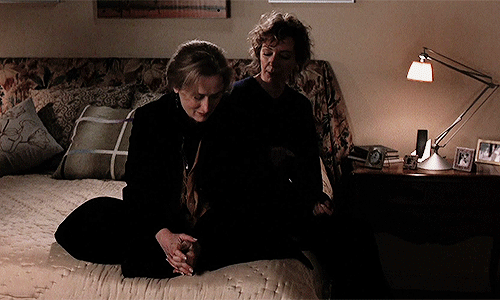
40 notes
·
View notes
Quote
I remember one morning getting up at dawn. There was such a sense of possibility. You know, that feeling. And I... I remember thinking to myself: So this is the beginning of happiness, this is where it starts. And of course there will always be more...never occurred to me it wasn't the beginning. It was happiness. It was the moment, right then.
The Hours by Michael Cunningham
11 notes
·
View notes
Photo









the hours icons
like/reblog if you save
credit gagalacrax on twitter if you use
give credits if you repost, please
follow us for more
the ask is open
#icons#the hours#the hours icons#icons the hours#nicole kidman#nicole kidman icons#icons nicole kidman#virginia woolf#virginia woolf icons#icons virginia woolf#meryl streep#meryl streep icons#icons meryl streep#clarissa vaughan#clarissa vaughan icons#icons clarissa vaughan#julianne moore#julianne moore icons#icons julianne moore#laura brown#laura brown icons#icons laura brown
29 notes
·
View notes
Photo







The Hours (2002) dir. Stephen Daldry
#the hours#thehoursedit#filmedit#filmsedit#filmgifs#meryl streep#merylstreepedit#allison janney#stephen daldry#clarissa vaughan#mygifs#mine
3K notes
·
View notes
Text
Intertwined Stories on Homosexual Issues
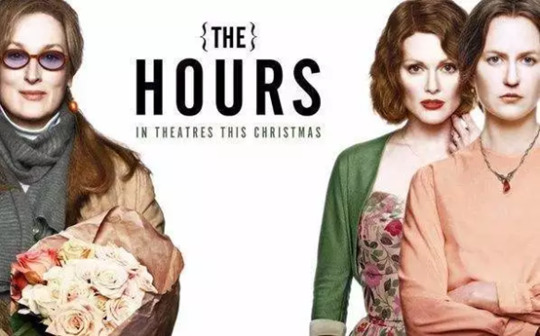
The Hours is a drama film directed by Stephen Daldry. The movie was released in United States on December 18, 2002, and won Oscar Award in the same year. It tells the inextricable connection between three women in different eras. To be honest, it is a deeply depressing and shocked Montage movie, which shows the different reaction made by three heroines, Virginia Woolf, Laura Brown, and Clarissa Vaughan, when facing same social and psychology pressure brought by gay and lesbian issues. By showing those stories, The Hours shows audiences how different people make their choice when facing death problems on homosexual issues: Escaping through death, meekly accepting, or getting rid of the pass. Although The Hours’s major concerns do not maintain colored gays or lesbian groups, it is a good movie which using Montage structure to guide its audiences to a broader real-life concept.

Virginia Woolf is a talented author, lived in a countryside in Britain in 1920s. She used to live in London, but finally settled down in the countryside in order to cure her illness. Virginia herself cannot stand for such a quiet life; she is eager for living in a busy city. This repressed country life made Virginia breathless, and her homosexual identity gradually revealed: she kissed her sister in her house. Being gay or lesbian was actually illegal in England at that time (Caitlin, 2015). I consider this kiss as the way Virginia recognizes and expresses herself in her repressed daily life, which is similar with the “coming out” process in homophile movement throughout the 1950 and into the 1960, when “the individual realization that one was homosexual, and the acknowledgment of this sexual identity to other gay people.”(Gross, 2002) Virginia’s self-conscious also start the plot that she persuaded her husband to move back to London latter in the movie. A plot at the beginning of Virginia’s story shows her fight ended in failure: She drowned herself into the river in the countryside. Perhaps Virginia’s homosexual identity isn’t recognized by the society, in the following years, she went back to the quiet countryside and suicide in despair.
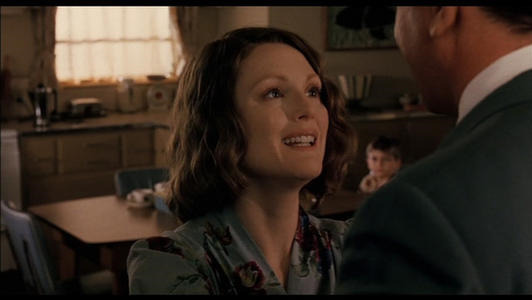
Laura is a typical housewife with a lovely son. She lived in the Los Angeles in 1950s, shortly after the end of World War II, when men returned to ordinary life with the honor in battlefield. Unlike others, Laura seems to be laden with anxiety; she was trapped in her dully life. It was Virginia’s novel, Mrs. Dalloway, resonated her to yearn for a new life style. When Laura’s friend came to visit her, she imitated Virginia and kiss her female friend. Her friend avoided contact with Laura latter on since homophobia, which makes Laura totally disappointed. She threw the unfinished birthday cake she made for her husband into the garbage can and wanted to give up her life as well. Laura wanted to suicide just like the story in Mrs. Dalloway. But in the end, she gave up and returned to her normal life. Laura has an intersectionality identity, not only as a white middle class lesbian, but also as a tender mother and a virtuous wife. In the heteronormativity concept in the society, Laura cannot only live for herself, she needs to be responsible for her family and fix into the family role, although they are contrary to her sexual orientation and personal willingness. Warner once stated how heterosexuality social mainstream shapes personal living way, “Het culture thinks of itself as the elemental form of human association, as the very model of intergender relations, as the indivisible basis of all community, and as the means of reproduction without which society wouldn't exist”, “Materialist thinking about society has in many cases reinforced these tendencies, inherent in heterosexual ideology, toward a totalized view of the social.” (Warner, 1993) Laura cannot ignore her child and husband’s expectation for her. Finally, Laura remade the birthday cake, celebrated birthday night with her husband, and continued her dully and hopeless life.
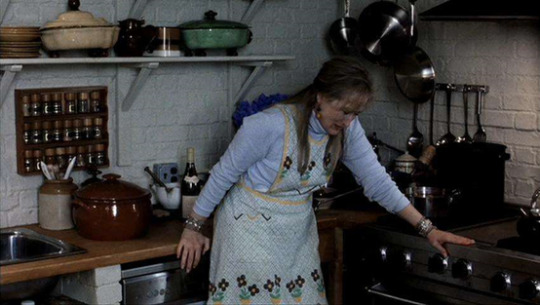
Relatively speaking, Clarissa Vaughan’s story is the best among three heroines. Clarissa is an editor who felt in love with Richard Brown, a gay writer with AIDS. Clarissa took good care of Richard every day, and considered that her life is meaningful only by staying around Richard. Richard, on the other hand, suffered from AIDS, disliked and scared by all his friends except Clarissa due to his disease. The only reason for him to keep alive is Clarissa. This type of living style is not what Clarissa and Relatively wanted, they just created cages for each other. The audiences can see how Clarissa wanted to get rid of it and started a new life, from the plot she cried alone in the kitchen. Finally, Richard jumped out of the window to stop Clarissa spending more time on him, and force Clarissa to start her new life. Although Clarissa was in heartbreaking sadness, she finally got rid of the past and started her new life.
Besides of the story, there are a lot of details and metaphors among the movie in order to make the it more lively and real to audiences. For example, Virginia’s sustained anxiety state and her unconscious action of biting the bottom of the pen when writing; Laura’s confused and unconfident mental state as well as the birthday ceremony cake she made twice; Clarissa’s messy hairstyle and her anger when Richard giving up himself. Although The Hours organized in Montage way, which lenses frequently switch form plots to plots, it brings a smooth viewing experience since the emotion between plots are identical and well organized. Those stories focused on the life of heroines, rather than any specific queer issues, which also claimed by Goltz et al, “‘To come out as me and not to highlight his sexuality, preferring to ‘talk about me, about my life, not about my queer life” (Goltz et al, 2016).
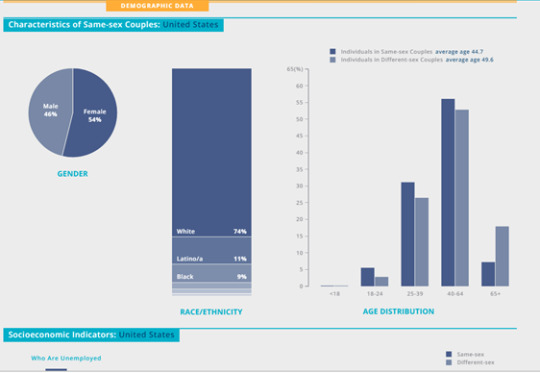
Although The Hours tells a great story of the death problems that queer people are facing among different period of time, it seems that its major concerns are all white people. The Hours failed to represent any living situation of black gay and lesbian people. While according to the report of UCLA, African-American take up about 12% of LGBTQ group nowadays. (The Williams Institute, 2019). The public’s losing attracted on colored skin people may cause them faced misrepresentative and misunderstanding. According to Ludmila Leiva’s words, “As a queer person who is also a person of color, watching television is a fraught experience for me. Constantly, I find myself searching for characters whose stories mirror my own and, repeatedly, I come up empty-handed. I am forced to accept the few, tiny fragments reflecting my own lived experiences that I can find scattered across today’s TV offerings, but I am tired. I long desperately for television writers, producers, and networks to prioritize the centering of human experiences beyond the conventional, and I know I am not alone.” (Ludmila, 2017)
Obviously, the experience of queer people in color is different than the white, but only a few people notice it in TV and film industry. Existing media works cannot represent them in the correct way, which will create unfair treatment toward those minority groups. The phenomenon of lacking colored queer concepts in The Hours and other media projects still need time to improve.
As a Chinese citizen, I must say that this movie shocked me a lot. CPC is harmonizing Chinese online environment, concepts like LGBTQ rarely appeared in Chinese public view. It is scary how many Chinese male and female actually living their daily life just like Virginia Woolf, Laura Brown, or Clarissa Vaughan. From my personal perspective, the most desperate story in The Hours is Laura’s one, she cannot ignore her child and husband’s expectation for her, thus she needs to keep living along with dull and hopeless life in the rest of her life. Happened to know that from Chinese perspective, Confucianism create a great heteronormativity for both man and woman to obey their role.
In general, I think The Hours is a great film to appreciation and analysis. Montage itself is a great way to guide the audience's mood and enlighten them to think more. By using Montage, the director maximizing the tension while guaranteed the integrity of his film. Moreover, the juxtaposition and intersection of Virginia Woolf, Laura Brown, and Clarissa Vaughan’s stories cause tension suspense throughout the entire film, and shows the relationship between each character in different places and different time period when facing the similar problem. In the end of the film when all three stories come to the end, the sense of shock comes continuously to force me think more outside the movie’s concept into the reality.
Works Cited
Gallagher, C. (2019). Was It Illegal to Be Gay In 1920s England Or Is Thomas Barrow's Struggle On 'Downton' Just About Cultural Pressure?. [online] Bustle. Available at: https://www.bustle.com/articles/62849-was-it-illegal-to-be-gay-in-1920s-england-or-is-thomas-barrows-struggle-on-downton [Accessed 27 Oct. 2019].
Gross, L. P. (2002). Up from invisibility: lesbians, gay men, and the media in America. New York: Columbia University Press.
Goltz, D. B., Zingsheim, J., Mastin, T., & Murphy, A. G. (2016). Discursive negotiations of Kenyan LGBTI identities: Cautions in cultural humility. Journal of International and Intercultural Communication, 9(2).
Leiva, L. (2019). TV Is Getting More Progressive, But It's Still Failing Queer People of Color. [online] Bustle. Available at: https://www.bustle.com/p/tv-is-getting-more-progressive-but-its-still-failing-queer-people-of-color-64520 [Accessed 25 Oct. 2019].
Warner, M. (Ed.). (1993). Fear of a queer planet: Queer politics and social theory (Vol. 6). U of Minnesota Press.
Williamsinstitute.law.ucla.edu. (2019). The Williams Institute. [online] Available at: https://williamsinstitute.law.ucla.edu/visualization/lgbt-stats/?topic=SS#demographic [Accessed 30 Oct. 2019].
#QueerMedia#The Hours#coming out#heteronormativity#intersectionality identity#AIDS#Virginia Woolf#Laura Brown#Clarissa Vaughan#social mainstream
6 notes
·
View notes
Quote
È alta, smunta, meravigliosa nella sua vestaglia, con il caffè che fuma in mano. A volte lui resta ancora senza parole di fronte a lei. Pensa che sia la donna più intelligente d'Inghilterra. I suoi libri verranno letti nei secoli. Lui lo crede con più forza di chiunque altro. Ed è sua moglie. È Virginia Stephen, pallida e alta, sorprendente come un Rembrandt o un Velàzquez, che compare vent'anni prima nella stanza di suo fratello con un vestito bianco, ed è Virginia Woolf, di fronte a lui, adesso.
Le ore, Michael Cunningham
#Palermo#ladyselanurt#le ore#The Hours#michael cunningham#virginia woolf#laura brown#la signora dalloway#clarissa vaughan#leonard woolf
6 notes
·
View notes
Photo

#film#The Hours#2002#drama#romance#LGBT#Meryl Streep#Clarissa Vaughan#Mrs. Dalloway#vertical captures#screencapture#Still Frame
60 notes
·
View notes
Text
Another study from The Hours

48 notes
·
View notes
Photo






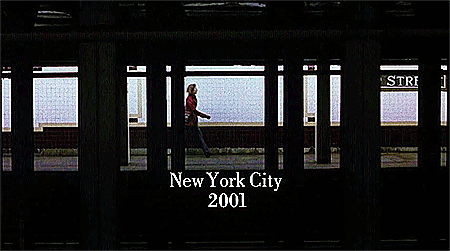



Always the years. Always the love. Always the hours.
#the hours#filmedit#fyeahmovies#leonard woolf#virginia woolf#dan brown#laura brown#sally lester#clarissa vaughan#my edit#gif#cinema
50 notes
·
View notes
Photo






“Mrs. Dalloway said she would buy the flowers herself.”
#the hours#nicole kidman#julianne moore#meryl streep#virginia woolf#laura brown#clarissa vaughan#gifs1#movie: the hours#the queen#Y'ALL#LOOK#AT#THESE#i have never made such quality gifs like look at all those dots as a result of dithering#OH WAIT#THERE AREN'T ANY#okay sorry#i love this movie and i'm so happy i was finally able to gif it#this gifset probably already exists buuuut#hoursgifs
104 notes
·
View notes
Quote
I don't think two people could have been happier than we have been.
The Hours by Michael Cunningham
2 notes
·
View notes
Video
vimeo
-Öldüğümüzde ne oluyor?
*Ne mi oluyor?
*Geldiğimiz yere geri dönüyoruz.
-Ben nereden geldiğimi hatırlamıyorum.
*Ben de.
#vimeo#the hours#nicole kidman#meryl streep#ed harris#allison janney#john c. reilly#virginia woolf#clarissa vaughan#richard brown#sally lester#julianne moore#laura brown#ölüm#mrs.dalloway#filmlerden alıntılar
27 notes
·
View notes
Photo


"...and for a moment they are both simply and entirely happy. They are present, right now, and they have managed, somehow, over the course of eighteen years, to continue loving each other. It is enough. At this moment, it is enough."
-- Michael Cunningham, The Hours
134 notes
·
View notes